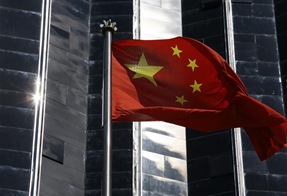 Many in India believe that Beijing is building special relationships with India’s old foe Pakistan and Sri Lanka and is extending its reach down the Indian Ocean.
Many in India believe that Beijing is building special relationships with India’s old foe Pakistan and Sri Lanka and is extending its reach down the Indian Ocean.
China’s ‘String of Pearls’ strategy seems to be surrounding India and has given food for thought to many in New Delhi for quite some time now.
At the G8 summit in L’Aquila recently, Indian Prime Minister Manmohan Singh made a bid in front of the international community to include India in the United Nations Security Council, which would put it on par with China, which is one of the five permanent members.
Christopher J. Pehrson, author of the book “String of Pearls: Meeting the challenge of china’s rising power across the Asian littoral”, says the ‘String of Pearls’ describes the manifestation of China’s rising geopolitical influence through efforts to increase access to ports and airfields, develop special diplomatic relationships and modernize military forces that extend from the South China Sea through the Strait of Malacca, across the Indian Ocean, and on to the Arabian Gulf.
Though India is trying to make a stronghold in South Asia, China seems to have been working consistently over the last four decades to strengthen its south Asian presence and fulfil its ‘String of Pearls’ policy, and that has many in India worried.
Alka Acharya, head of East Asian studies at Jawaharlal Nehru University, says that China’s ‘string of pearls’ policy started in the 1980s and its basic aim was to give China increased energy security with refueling stations throughout the world.
But it has helped China project its political and military influence further. Some in India think China’s latest addition to its string of pearls is the Hambantota port in southern Sri Lanka.
Construction on the first phase began last year with Chinese funding, and the whole $1 billion project is expected to finish by 2023.
B. Raman, a retired senior government official, has written a paper on the project of Hambantota port in which he mentions that “the Chinese interest is more strategic than purely commercial. It is very unlikely that Sri Lanka would allow the Chinese Navy to use Hambantota against India. But a Chinese naval presence in Hambantota would add to the concerns of the Indian Navy by increasing the vulnerability of the South to pressures from the Chinese Navy.”
Raman also mentions in his paper that China had helped Pakistan with a similar project in Gwadar on the Mekran coast in Balochistan.
The first phase of construction has already been completed and the port was given a nod when Pervez Musharraf was the president.
When it is done, Hambantota is likely to have an aviation fuel storage facility and a liquefied natural gas refinery. The first phase will have bunkering facilities to refuel ships that pass the nearby shipping lanes, among the world’s busiest.
 Sri Lankan President Mahinda Rajapaksa says India has nothing to worry about because the project is strictly a commercial venture.
Sri Lankan President Mahinda Rajapaksa says India has nothing to worry about because the project is strictly a commercial venture.
India though is taking no chances and is increasing its troops along the northeastern border so as to prevent any further infiltration of Chinese soldiers, who had illegally entered Indian territory last year.
A retired intelligence officer who spoke to Reuters on condition of anonymity said China had begun building a road in Pakistan-occupied Kashmir in the early 1970s.
“We had got hold of a source who told us that China was building a road from China- Gilgit- Neelam Valley, they had also planned a number of tunnels and bridges in places where roads couldn’t be constructed,” the officer said.
The status of the road is not known, some say it is still under construction.
The Karakoram Highway, which connects China’s Xinjiang region with Pakistan’s north, can also be seen as one of China’s pearls. The highway, called the ninth wonder of the world by some because of its altitude, was completed in 1986 after 20 years of construction.
The road opened up China-Pakistan trade and gave both of India’s rivals a fast route through the mountains, not far from the Line of Control in Kashmir.
(For updates you can share with your friends, follow TNN on Facebook and Twitter )
